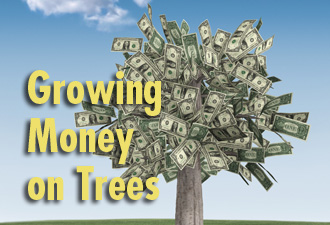Report

Growing Money on Trees
Executive Summary
In December 2009, the Pennsylvania Climate Change Advisory Committee (PCCAC), in partnership with the Pennsylvania Department of Environmental Protection (DEP) and the Center for Climate Strategies (CCS), released its report, Pennsylvania: Final Climate Change Action Plan. Governor Edward G. Rendell hailed the report’s 52 recommendations that “could result in the net creation of 65,000 new full-time jobs and add more than $6 billion to the state’s economy” by reducing greenhouse gas emissions by more than 30%.[1]
However, a cost-benefit analysis finds serious flaws in the report, rendering its findings useless for policymakers seeking to make informed policy decisions about climate change and reducing greenhouse gas emissions in Pennsylvania.
We conclude that the PCCAC report fails to perform the most basic task of any cost-benefit analysis-quantifying both the costs and benefits in monetary terms so that they can be directly compared. For example, the report estimates that Pennsylvania can save nearly $11 billion by planting 35 million trees in Pennsylvania’s cities and towns by 2020. However, the report neither mentions the $8.4 billion cost to plant and maintain these trees nor explains how this urban forestry program would generate an astounding 104% return on investment. Money appears to be growing on trees!
Another unreasonable assumption is that over half of all Pennsylvania housing units will replace 2.5 million toilets by 2020. The report does not calculate the high marginal costs associated with policies needed to induce a large number of consumers to replace existing toilets with more efficient ones.
Beacon Hill Institute cannot find any sound scientific basis for the PCCAC’s claims of job creation and economic growth. Thus, policymakers are left with no foundation on which to judge the merits of the Plan’s recommendations. Therefore, the report’s estimates of cost savings and benefits cannot be trusted and fail to provide legislators with reliable guidance in developing climate change and greenhouse gas mitigation policies.
Even if the PCCAC’s projected economic benefits were accurate, the environmental and climate change benefits of its policy recommendations would be negligible. Pennsylvania’s share of emissions accounts for just 5.2% in the U.S., and a minuscule 0.9% worldwide. If PCCAC’s recommendations worked as projected, they would result in a net decrease of 0.24% in projected 2020 global emissions-a reduction that would bear no discernable impact on global warming but would impose a high cost on Pennsylvanians, lowering their quality of life.
[1] “Climate Change Action Plan Presented to Governor Rendell” (December 18, 2009) http://tinyurl.com/29lztel (accessed July 25, 2010).